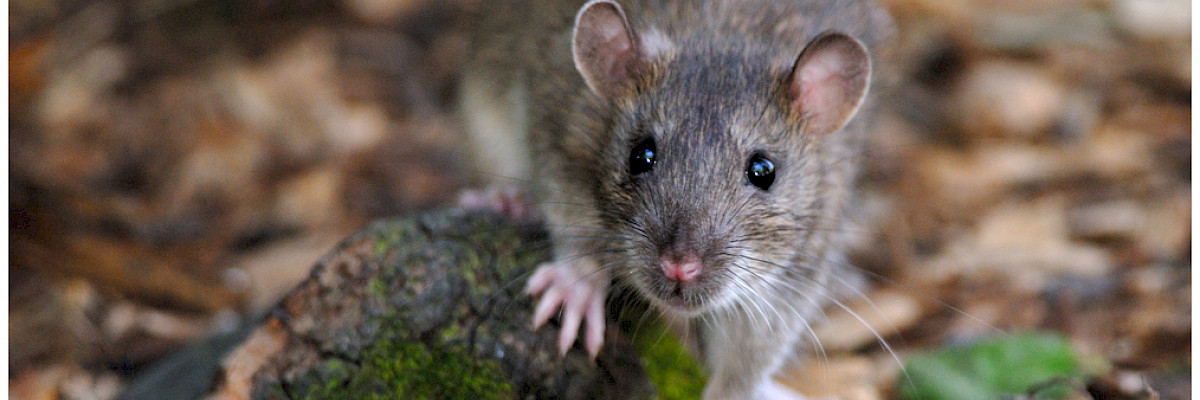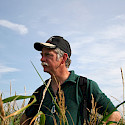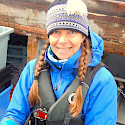
Arctic Invasive Alien Species (ARIAS)
ARIAS sets forth the priority actions that the Arctic Council and its partners are encouraged to take to protect the Arctic region from invasive alien species.
Globally, invasive alien species are considered the second most important threat to biodiversity after habitat loss. Invasive alien species are species introduced by human activity that flourish and spread in their new environment and threaten native species and ecosystem functions. There is an immediate opportunity—already largely lost in many other regions of the world—to proactively build resilience to the risks posed by invasive alien species to the Arctic’s unique ecological, social, and economic systems.
The Arctic Invasive Alien Species (ARIAS) Strategy and Action Plan, produced by CAFF and the Protection of the Arctic Marine Environment (PAME) sets forth the priority actions that the Arctic Council and its partners are encouraged to take to protect the Arctic region from the significant threat of invasive alien species. These priority actions span terrestrial, aquatic, and marine ecosystems, and take environmental, cultural, and economic perspectives into consideration, including drivers, impacts, and response measures.
Priority actions to address invasive alien species in the Arctic
Inspire urgent and effective action
Goal: Raise awareness of the unique opportunity that the Arctic Council and its partners have to inspire the urgent and effective action necessary to protect the Arctic from invasive alien species.
Improve the knowledge base for well-informed decision making
Goal: Improve the capacity of the Arctic Council and its partners to make well-informed decisions on the needs, priorities, and options for preventing, eradicating, and controlling invasive alien species in the Arctic by improving the knowledge base.
Undertake prevention and early detection/rapid response initiatives
Goal: Protect Arctic ecosystems and human well-being by instituting prevention and early detection/rapid response programs for invasive alien species as a matter of priority.
All those who value the Arctic are invited to consider the relevance of these priorities to their goals and to take action, as appropriate. Achieving these goals is dependent upon cooperation and urgent action. Some of the actions identified apply to the Arctic Council as a whole, while others are best addressed at the working group level or through national implementation. It is recommended that Arctic States, Permanent Participants, and their partners integrate the ARIAS Strategy and Action Plan into national commitments, as appropriate, and employ these priority actions as a means to advance decisions under other multi-lateral fora and instruments. These priority actions provide guidance on where to start, where to place priorities, and where to invest in the future of the Arctic.
This effort is particularly urgent for the Arctic region. Rapid climate change is making the region more vulnerable to invasive species introductions, and at the same time a rapid increase in human activity and transit and energy development in the region is increasing the chance of introduction of new and invasive species. There is an immediate opportunity, already largely lost in many other regions of the world, to proactively build resilience to the risks posed by invasive species to the Arctic's unique social, economic, and environmental systems.
Invasive alien species enter and spread throughout the Arctic through “pathways.” Pathways of particular concern in the Arctic include: shipping (ballast water, hull biofouling); horticulture; large-scale tree planting for aesthetics, fuel, windbreaks, and carbon sequestration; transport of material and equipment for energy development; mineral exploration; settlement expansion; (e.g. ports; roads; pipelines; aquaculture; and tourism, including hunting and fishing (e.g., through contaminated boats, equipment or gear). Examples of other pathways of invasion into Arctic ecosystems include: recreational boating and marine debris; translocated piers, docks, and pilings; and the release or escape of live animals.
ARIAS follows up on Arctic Biodiversity Assessment findings and recommendations
The Arctic Biodiveristy Assessment Key Finding #6 states that
There are currently few invasive alien species in the Arctic, but more are expected with climate change and increased human activity
The Arctic Biodiveristy Assessment Recommendation #9 states that there is a need to:
Reduce the threat of invasive alien/non-native species to the Arctic by developing and implementing common measures for early detection and reporting, identifying and blocking pathways of introduction, and sharing best practices and techniques for monitoring, eradication and control. This includes supporting international efforts currently underway, for example those of the International Maritime Organization to effectively treat ballast water to clean and treat ship hulls and drilling rigs.
CAFF's Actions for Arctic Biodiversity: Implementing the Actions of the Arctic Biodiversity Assessment 2013-2023 outlines two projects to address Arctic invasive Species:
- 9.1 (2015-2017): Develop a strategy for the prevention and management of invasive species across the Arctic, including the identification and mitigation of pathways of introduction of invasions. Include involvement of Indigenous observing networks, which include invasive and new species reporting, to assist with early detection.
- 9.2 (2017-2019): Incorporate common protocols for early detection and reporting of non-native invasive species in the Arctic into Circumpolar Biodiversity Monitoring Program (CBMP) monitoring plans.
Experts
Lead Working Groups
CAFFPAME
Lead Arctic States & Permanent Participants
NorwaySweden
The Kingdom of Denmark
 Arctic Council Working Group
Arctic Council Working Group 






